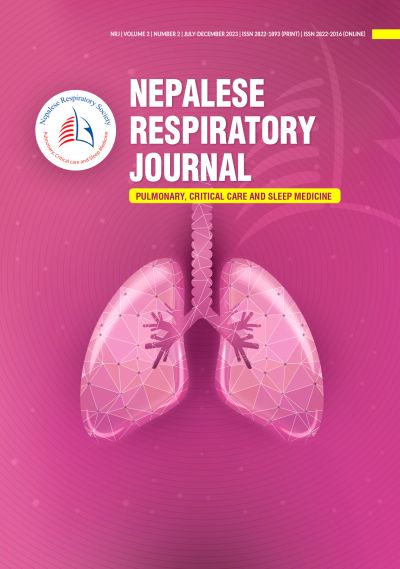Flexible bronchoscopy for removal of airway foreign bodies: A single center experience
DOI:
https://doi.org/10.3126/nrj.v2i2.69195Keywords:
Airway Foreign Body, Adults, Bronchoscopy, Flexible bronchoscopyAbstract
Background: Airway foreign bodies are rare in occurrence and challenging to manage. The presentation varies depending upon the size, site, and nature of the aspirated material. Although rigid bronchoscopy is the preferred choice in children; distally lodged foreign bodies in adults have high success rate of extraction with flexible bronchoscope.
Objective: The aim of this study is to evaluate the utility of flexible bronchoscopy for removal of airway foreign bodies in adolescents and adults.
Methods: In a retrospective study conducted between January 2018 to March 2024 at National Academy of Medical Sciences, Bir hospital; medical records of patients undergoing bronchoscopy for airway foreign bodies were extracted.
Methods and Material: Demographic parameters, type and location of foreign body, extraction procedure, accessory equipment used, and the success rates were analyzed. Complications during and after the procedure were also recorded.
Results: During the study period, a total of 3143 bronchoscopies were performed, of which 18 (0.57%) were done for foreign body extraction. Patients were aged between 12 to 89 years; cough was the commonest symptom and lobar collapse was the commonest radiological sign. Organic foreign bodies accounted for 61% cases and inorganic 39%. Right lower lobe was the commonest site. Successful flexible bronchoscopy assisted extraction was achieved in 89%. Of the 18 patients, 12 (67%) were successfully removed with rat toothed forceps and five (28%) with basket device. No major complications were noted.
Conclusions: Flexible bronchoscopy has a high success rate in management of airway foreign bodies and should always be considered as first line in adults.
Downloads
Downloads
Published
How to Cite
Issue
Section
License
© Nepalese Respiratory Society

This article is licensed under a Creative Commons Attribution 4.0 International License.




